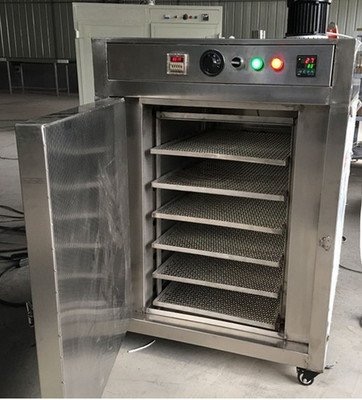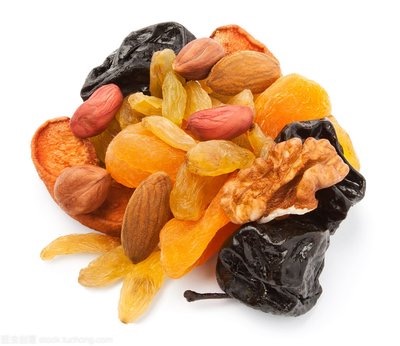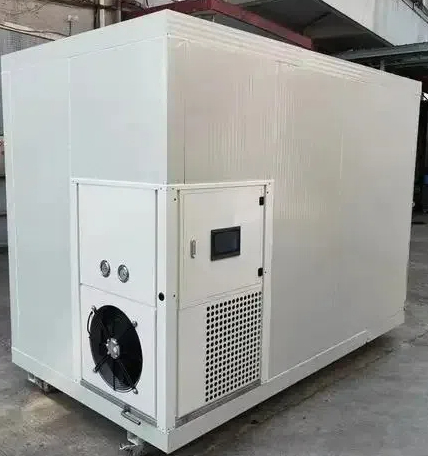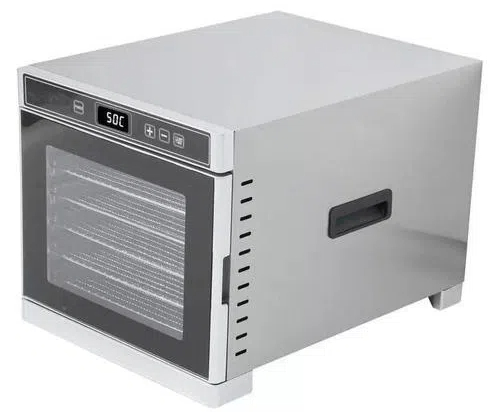
Content Menu
● Introduction
● What Is a Heat Pump Dryer?
>> How Does It Work?
● Advantages of Heat Pump Dryers
>> Energy Efficiency
>> Cost-Effectiveness
>> Precise Temperature Control
>> Nutrient Retention
>> Reduced Drying Time
>> Increased Shelf Life
>> Environmental Impact
● Heat Pump Dryer Price
● Comparison with Traditional Dryers
● Operational Considerations
>> Installation Requirements
>> Training Staff
>> Maintenance Needs
>> Scalability
● Case Studies: Success Stories with Heat Pump Dryers
>> Case Study 1: Fruit Processing Company
>> Case Study 2: Herb Manufacturer
>> Case Study 3: Meat Processing Plant
● Conclusion
● Related Questions
>> 1. What types of foods are best suited for heat pump drying?
>> 2. How do I choose the right capacity for a heat pump dryer?
>> 3. Are there maintenance requirements for heat pump dryers?
>> 4. Can I use a heat pump dryer for bulk drying?
>> 5. What is the average lifespan of a heat pump dryer?
Introduction
In the world of food processing, drying is a crucial step that significantly affects the quality, shelf life, and safety of food products. Among the various drying technologies available today, heat pump dryers have emerged as a popular choice for many food manufacturers. This article explores the advantages of heat pump dryers, their pricing, and how they compare to traditional drying methods. We will also delve into the operational benefits, energy efficiency, and overall value they bring to food processing businesses.

What Is a Heat Pump Dryer?
A heat pump dryer is an advanced drying technology that utilizes a refrigeration cycle to transfer heat from one place to another. Unlike traditional dryers that generate heat through combustion or electrical resistance, heat pump dryers extract heat from the environment and use it to evaporate moisture from food products. This process not only makes them energy-efficient but also allows for precise temperature control during the drying process.
How Does It Work?
The operation of a heat pump dryer involves several key components:
- Evaporator: Absorbs heat from the surrounding air.
- Compressor: Increases the temperature of the absorbed heat.
- Condenser: Releases the heat into the drying chamber.
- Expansion Valve: Regulates the flow of refrigerant.
This cycle allows for continuous moisture removal while maintaining optimal drying conditions.
Advantages of Heat Pump Dryers
Energy Efficiency
One of the most significant benefits of using a heat pump dryer is its energy efficiency. Traditional drying methods often consume large amounts of energy due to high-temperature requirements. In contrast, heat pump dryers operate at lower temperatures, significantly reducing energy consumption and costs over time.
Cost-Effectiveness
Although the initial investment in a heat pump dryer may be higher than traditional dryers, the long-term savings on energy bills can be substantial. Many businesses find that these savings offset the higher upfront costs within a few years.
Precise Temperature Control
Heat pump dryers allow for precise control over drying temperatures, which is essential for preserving the quality of delicate food products. This capability ensures that nutrients are retained and that food maintains its desired texture and flavor.
Nutrient Retention
Unlike conventional drying methods that can lead to nutrient loss due to high temperatures, heat pump dryers provide a gentler drying process. This is particularly beneficial for fruits, vegetables, and herbs, where preserving nutritional content is crucial.

Reduced Drying Time
Heat pump dryers can also reduce overall drying time compared to traditional methods. Their efficient use of air as a drying medium leads to faster moisture removal, which is especially important for perishable items.
Increased Shelf Life
By effectively removing moisture from food products, heat pump dryers help inhibit the growth of bacteria, yeasts, and molds. This results in longer shelf life for dried foods, making them more appealing to consumers and reducing waste for producers.
Environmental Impact
Heat pump dryers are more environmentally friendly compared to traditional methods. They produce fewer emissions and have a lower carbon footprint due to their energy-efficient operation.
Heat Pump Dryer Price
When considering a heat pump dryer for your food processing needs, it's essential to evaluate its price in relation to its benefits. The average price range for commercial heat pump dryers varies based on capacity and features but generally falls between $5,000 and $20,000.
Factors influencing price include:
- Brand Reputation: Established brands may charge more due to their reliability and service support.
- Capacity: Larger units designed for high-volume production will typically cost more.
- Features: Advanced features such as automation and enhanced controls can increase costs.
Comparison with Traditional Dryers
To better understand whether investing in a heat pump dryer is worthwhile compared to traditional models, let's compare their key features side by side:
| Feature | Heat Pump Dryer | Traditional Dryer |
|----------------------------------|------------------------------------|----------------------------------|
| Energy Efficiency | High | Moderate to Low |
| Initial Cost | Higher | Lower |
| Operating Cost | Lower (due to energy savings) | Higher |
| Temperature Control | Precise | Less precise |
| Nutrient Retention | High | Moderate |
| Drying Time | Faster | Slower |
| Environmental Impact | Low | Moderate |
This comparison highlights that while heat pump dryers may have a higher upfront price tag, their long-term benefits make them a compelling choice for many food processing operations.
Operational Considerations
When considering a shift to using heat pump dryers in your production line, there are several operational factors to take into account:
Installation Requirements
Installing a heat pump dryer typically requires specific conditions such as adequate ventilation and space for airflow around the unit. Proper installation is crucial for maximizing efficiency and performance. It's advisable to work with professionals who understand the unique requirements of these systems.
Training Staff
Transitioning to new technology often necessitates training staff on how to operate and maintain these machines effectively. Understanding how to set optimal drying parameters based on different products can significantly enhance productivity and product quality.
Maintenance Needs
Regular maintenance is essential for ensuring longevity and efficiency in any drying system. Heat pump dryers require periodic checks on refrigerant levels, cleaning filters, and inspecting components such as fans and sensors. Establishing a routine maintenance schedule can prevent costly downtime and repairs.
Scalability
Heat pump dryers are available in various sizes and configurations, making them suitable for both small-scale operations and large industrial applications. As your business grows or changes its product line, you can choose models that fit your evolving needs without compromising efficiency or quality.
Case Studies: Success Stories with Heat Pump Dryers
Several companies have successfully integrated heat pump dryers into their production processes with remarkable results:
Case Study 1: Fruit Processing Company
A fruit processing company specializing in dried fruits switched from conventional hot air dryers to heat pump technology. They reported a 30% reduction in energy costs within the first year while improving product quality by retaining more nutrients and flavor profiles in their dried fruits.
Case Study 2: Herb Manufacturer
An herb manufacturer faced challenges with moisture retention in their products using traditional methods. After implementing a heat pump dryer system, they achieved consistent moisture levels across batches while extending shelf life by up to six months due to better preservation techniques.
Case Study 3: Meat Processing Plant
A meat processing plant adopted heat pump technology as part of their commitment to sustainability. They found that not only did they reduce energy consumption by 40%, but they also improved their product's safety by minimizing bacterial growth through effective moisture removal.
These case studies illustrate how transitioning to heat pump dryers can lead to significant operational improvements across various sectors within food processing.
Conclusion
In conclusion, heat pump dryers represent an innovative solution in the food processing industry. Their energy efficiency, cost-effectiveness over time, precise temperature control, and ability to preserve nutrients make them an attractive option compared to traditional drying methods. While the initial investment may be higher, the long-term savings on energy costs and increased product quality can justify this expense.
As businesses continue to seek ways to improve efficiency and sustainability in food processing, heat pump dryers are likely to become increasingly popular. For manufacturers looking for reliable OEM services in this area, investing in high-quality heat pump technology could lead to significant advantages in both product quality and market competitiveness.

Related Questions
1. What types of foods are best suited for heat pump drying?
Heat pump dryers are ideal for fruits, vegetables, herbs, meats, and seafood due to their gentle drying process that preserves nutrients and flavor.
2. How do I choose the right capacity for a heat pump dryer?
Choosing the right capacity depends on your production volume needs; consider both current requirements and future growth when selecting a unit.
3. Are there maintenance requirements for heat pump dryers?
Yes, regular maintenance such as cleaning filters and checking refrigerant levels is essential for optimal performance and longevity.
4. Can I use a heat pump dryer for bulk drying?
Absolutely! Heat pump dryers can be designed with varying capacities suitable for both small batches and large-scale production.
5. What is the average lifespan of a heat pump dryer?
With proper maintenance, a heat pump dryer can last anywhere from 10 to 15 years or more, making it a worthwhile investment in your production line.












